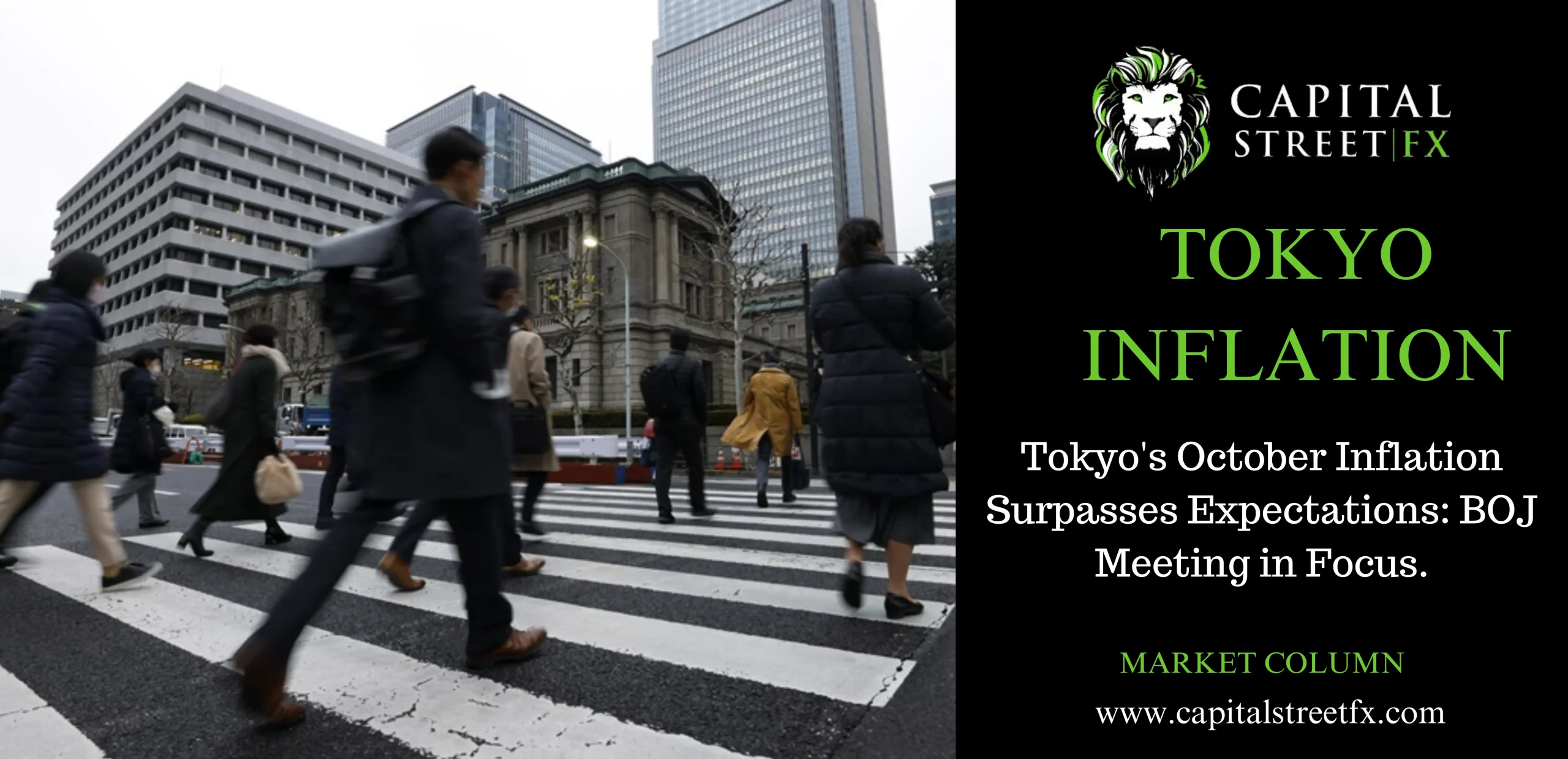Tokyo’s October Inflation Surpasses Expectations: BOJ Meeting in Focus.
The Japanese capital, Tokyo, is making headlines as its Consumer Price Index (CPI) inflation for October surpassed expectations. This development is especially significant in light of the impending Bank of Japan (BOJ) meeting, where investors eagerly await clues about a potential departure from the current ultra-dovish monetary policy. In this article, we’ll explore the latest CPI figures and the factors driving Tokyo’s inflation, along with the potential implications for the BOJ.
Introduction
October brought unexpected news for the Japanese economy as Tokyo’s core consumer price index (CPI) outpaced predictions. This indicator, which excludes volatile fresh food prices, exhibited an annualized growth rate of 2.7%. In this article, we’ll delve into the details of Tokyo’s inflation and its broader economic implications.
Tokyo’s Surprising CPI Growth
- Tokyo’s Core CPI: Tokyo’s core CPI, which excludes both fresh food and fuel prices, surged by 3.8% during October. These figures are remarkable, staying close to 40-year highs, indicating that underlying inflation in Tokyo continues to rise.
- Headline CPI: The headline CPI inflation in Tokyo accelerated to 3.3%, up from 2.8% in the previous month. This sharp increase is attributed to various factors.
Factors Behind the Inflation Surge
- Elevated Food Prices: Consistently high food prices have been a significant driver of inflation. Japanese consumers have been grappling with increased costs for basic food items.
- Rising Fuel Costs: Global oil prices have been on the upswing, leading to increased fuel costs in Tokyo. This, in turn, has contributed to the overall inflationary pressure.
- Consumer Spending: Surprisingly, despite rising inflation, Japanese consumers have continued to spend on discretionary items and recreational activities. This sustained spending has added to the inflationary pressure.
Tokyo CPI as a Nationwide Indicator
- Nationwide Impact: Tokyo’s CPI figures are closely monitored because the greater Tokyo area significantly influences Japan’s economic growth. As Tokyo experiences inflation, it often foreshadows what the entire nation may soon encounter.
Currency and Inflation
- Yen Depreciation: The substantial depreciation of the Japanese yen, which was trading near 33-year lows, has played a pivotal role in boosting inflation. The weaker yen has led to increased import costs, further driving up prices.
Implications for the BOJ Meeting
- Upcoming BOJ Meeting: This report comes just ahead of the Bank of Japan’s upcoming meeting. The central bank is expected to maintain negative interest rates when it convenes next Tuesday.
- Yield Curve Control: However, the persistent inflation, a weakened yen, and rising bond yields are likely to exert pressure on the BOJ to consider adjustments in its yield curve control mechanism. These adjustments could resemble an interest rate hike in the eyes of traders.
- Negative Interest Rates: The BOJ is also facing mounting pressure to move away from negative interest rates. This is particularly evident as Japan’s economy remains resilient, and inflation has consistently exceeded the BOJ’s 2% annual target for over a year.
Conclusion
In summary, Tokyo’s inflation exceeding expectations has raised a significant point of discussion as the Bank of Japan’s meeting approaches. While the BOJ is anticipated to maintain negative interest rates, the mounting inflation, weakening yen, and rising bond yields may prompt the central bank to consider policy adjustments.

